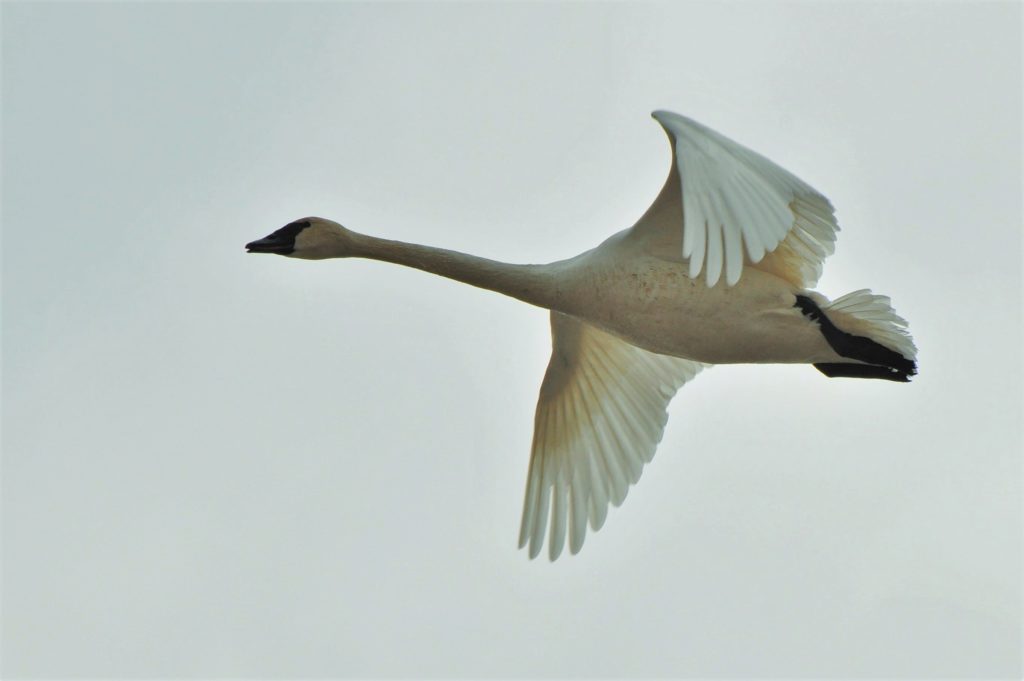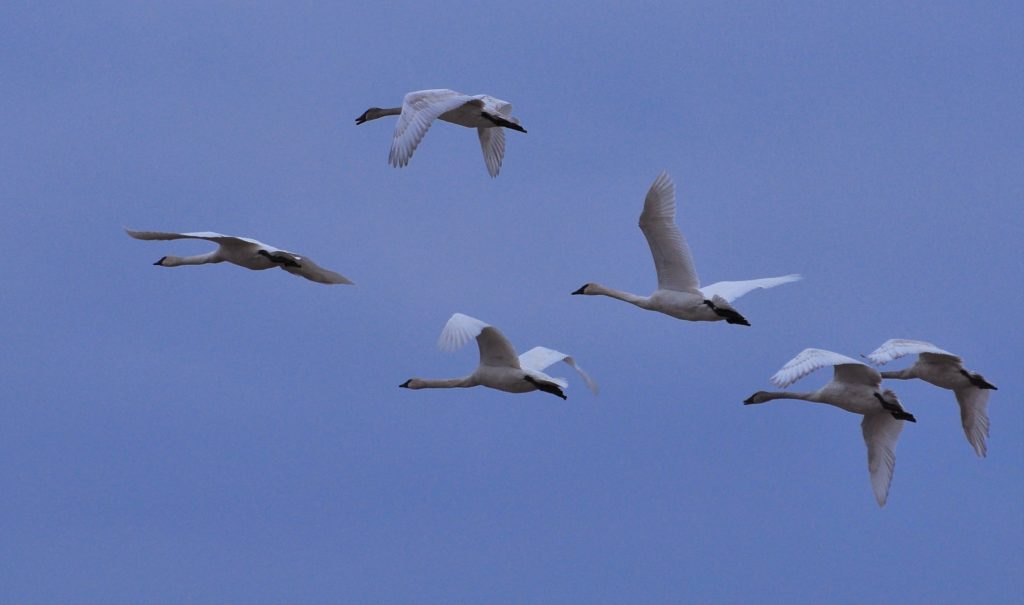Photography courtesy of Lowell Washburn, all rights reserved.
With only three days remaining in North Iowa’s 2020 Iowa duck season, the morning of November 29 had all the makings of a good hunt. Temperatures hovered near freezing, overcast skies were dark and glowering and, best of all, a hurricane wind was ripping from the northwest. If this wouldn’t have the birds stirred up, then nothing would.

Legal shooting time began a half hour before sunrise, and I was still fiddling with my blind when the first flock of around a dozen or so mallards took me by surprise. With wings cupped and orange legs extended, the ducks were descending in a near vertical slant. Etched against the leaden skies, the flock loomed larger by the second. By the time I grabbed my shotgun, the birds were already in easy range at the edge of the decoys. I rushed my first shot which resulted, of course, in a clean miss. Settling down a bit, I redeemed myself by downing a fat drake with the second barrel.
Things really started jumping after that as strings of geese and multiple flocks of ducks began to dot the wind ravaged, morning sky. It was about that time when I heard the first group – the unique and unmistakable bugling of trumpeter swans in flight. Looking back over my shoulder, I quickly spotted the birds – a group of six, high and traveling due south. Assisted by gusting northerly winds, the swans must have been doing sixty or seventy miles per hour; maybe more. In the span of what was probably less than a minute, the birds had become mere specks on the southern horizon.

The swans had barely vanished when I heard a second flock—this time a group of nine – also approaching from the north. Passing directly overhead, they too quickly vanished to the south. From then on, it was one flock of trumpeter swans after another, a never-ending train of giant white birds appearing from the north and disappearing to the south. In addition to that, there were also flocks that I heard but never saw. For the better part of an hour the flight continued; an unabated, never ending, vocalizing procession of America’s largest waterfowl on aerial display. And then it was over. Although the skies continued to remain busy with trading flocks of ducks and geese, the swan flight had ended. Upon reaching its abrupt conclusion, I never saw or heard another trumpeter.
Although more mallards descended to the decoys, I couldn’t get those trumpeters out of my mind. It had been an amazing spectacle, and I have never seen a swan migration to compare. One thing was certain. The astonishing flight had provided a vivid reminder of the ongoing success of one of America’s most remarkable wildlife recoveries.
It wasn’t all that long ago that you couldn’t catch even a fleeting glimpse of a wild trumpeter swan anywhere in the continent’s mid-section – Iowa included. Although trumpeter swans were a common nesting species when settlers first arrived in Iowa, they declined rapidly and then disappeared entirely by the mid-1880s. The huge white waterfowl were suffering similar declines elsewhere. By the 1930s, less than 70 trumpeters remained in the entire U.S.
In 1993, the Iowa DNR launched an aggressive trumpeter swan restoration program. Spearheaded by Iowa wildlife biologist, Ron Andrews, the project focused on the release of captive reared youngsters
[cygnets]with an ambitious goal of establishing 15 nesting pairs by 2003. Many of those released birds survived and in 1998, the first modern-day pair of free ranging swans successfully nested in eastern Iowa.
In 2001, trumpeter swans returned to Northern Iowa when a pioneering pair produced a brood of four cygnets at Cerro Gordo County’s Mallard Marsh — the first pair of wild swans to nest anywhere in Northern Iowa since before the Civil War. Ironically, the swan nest was located just thirty yards from where the county’s first modern-day pair of giant Canada geese nested atop a muskrat lodge in the spring of 1976.
Today, wild trumpeter swans are successfully reclaiming historic wetland nesting areas across the state. To monitor progress, swan populations are currently surveyed every fifth year. During the summer of 2020, 119 nesting pairs of trumpeter swans were inventoried statewide. Swans nested in 37 Iowa counties with the greatest densities occurring in Northern Iowa where successful pairs produced an average of 4.4 cygnets per nest.
The ongoing expansion of Iowa’s swan population has been an extraordinary success. The 2020 census was more than double the 49 nests counted in 2015. In just three decades, Iowa trumpeter swans have gone from nonexistent, to extremely rare, to an increasingly common nesting species. It’s a wildlife recovery that all Iowans should celebrate.

 Tom Cope
Tom Cope Sue Wilkinson
Sue Wilkinson Susan Judkins Josten
Susan Judkins Josten Rudi Roeslein
Rudi Roeslein Elyssa McFarland
Elyssa McFarland Mark Langgin
Mark Langgin Adam Janke
Adam Janke Joe Henry
Joe Henry Kristin Ashenbrenner
Kristin Ashenbrenner Joe Wilkinson
Joe Wilkinson Dr. Tammy Mildenstein
Dr. Tammy Mildenstein Sean McMahon
Sean McMahon